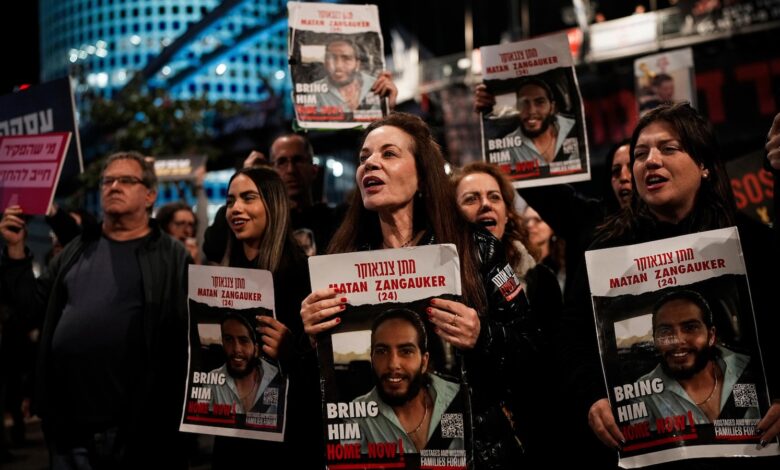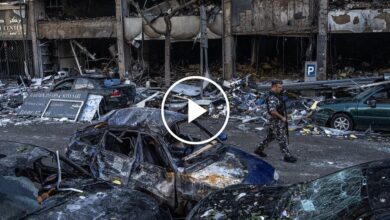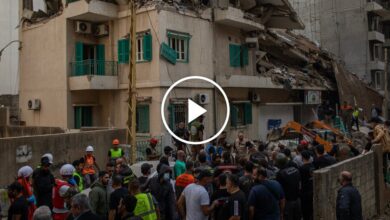As Gaza hostage crisis drags on for Israel, here’s what we know

JERUSALEM — Israel’s announcement that four more hostages died in Hamas captivity, including three men in their 80s, stoked fears that time is running out for captives in Gaza who are still alive.
It set off protests across Israel calling for an immediate cease-fire deal that would secure the release of the dozens of remaining captives in exchange for Palestinian prisoners held by Israel.
About eight months into the Israel-Hamas war, here’s where things stand, according to official Israeli figures:
Israel’s hostage crisis began when Hamas attacked Israel on Oct. 7, killing around 1,200 people and kidnapping about 250 back to Gaza.
Of the hostages taken, 105 were released during a weeklong cease-fire in November, in an exchange for 240 Palestinian prisoners. The released hostages included 81 Israeli citizens and 24 foreign nationals, most of them Thais.
Four female hostages were released prior to this cease-fire through deals brokered by the U.S. and other mediators.
After the November cease-fire, more than 120 hostages remained in Gaza, including four Israelis captured years earlier. Two of them, Hadar Goldin and Oron Shaul, were Israeli soldiers believed to have been killed in a 2014 war.
Of those still in captivity, Israel has pronounced 43 dead, saying their remains are being held by militants. Some are believed to have been killed during the Oct. 7 attack. The cause of death for others is unknown, although Hamas has claimed some were killed in Israeli airstrikes. Israeli officials believe that the number of dead hostages could be higher.
There are about 80 hostages left in Gaza who Israel has not pronounced dead.
That includes about 15 women and 2 children under the age of 5 — Kfir and Ariel Bibas, whose mother, Shiri Bibas, is also still in captivity. Two men in their 80s are also among the captives.
Also included is Hersh Polin-Goldberg, a 23-year-old American-Israeli who was taken hostage at a music festival where over 300 people were killed. Polin-Goldberg’s parents have led a global campaign seeking their son’s release and drawing attention to the plight of the hostages. Hamas released a video of Polin-Goldberg in April. Badly wounded in the Oct. 7 attack, his left hand was amputated. But the video marked the first sign he was alive.
Another hostage believed to be alive is 26-year-old Noa Argamani, whose mother Liora Argamani has stage 4 breast cancer and hopes to see her daughter alive once more.
Israeli troops have recovered from Gaza the bodies of at least 16 hostages, according to Israeli government figures.
The bodies of two hostages, including female soldier Noa Marciano, were brought back from Gaza in November. So were the bodies of three hostages killed by friendly fire in December.
The bodies of seven hostages, two women and five men, were recovered in Gaza last month.
The Israeli military says it has rescued three hostages in Gaza.
It brought 1 home in the immediate aftermath of the Oct. 7 attack.
Two men were rescued in February when troops stormed a heavily guarded apartment in a densely packed town in the Gaza Strip. Airstrikes carried out to provide cover during the raid killed more than 60 Palestinians, including women and children, according to the Gaza Health Ministry.






